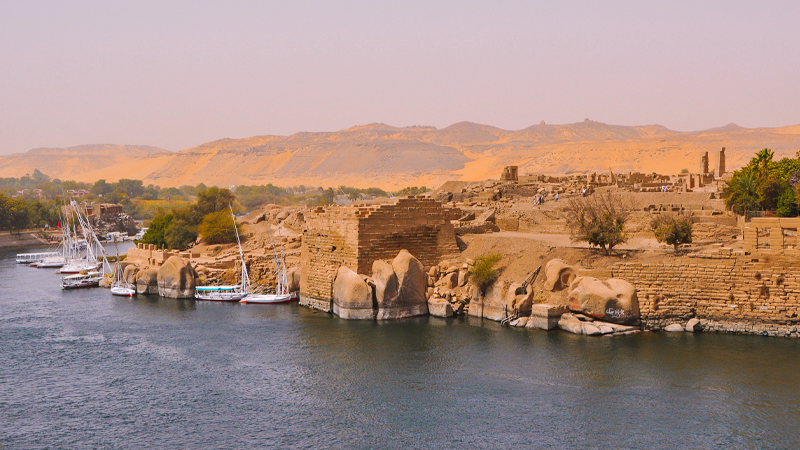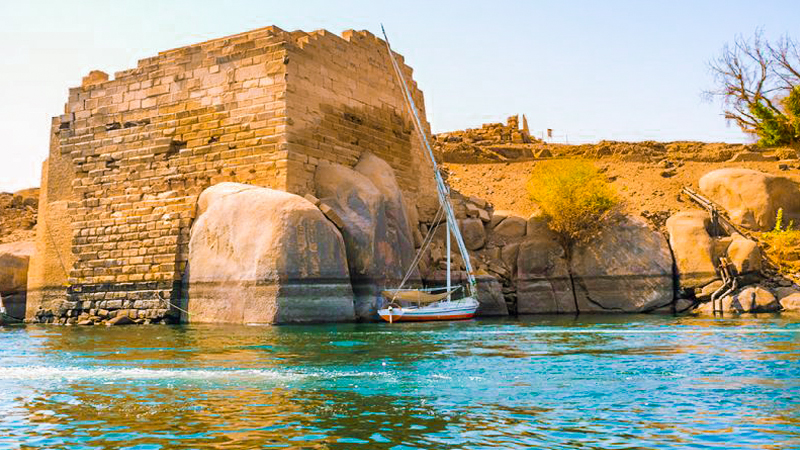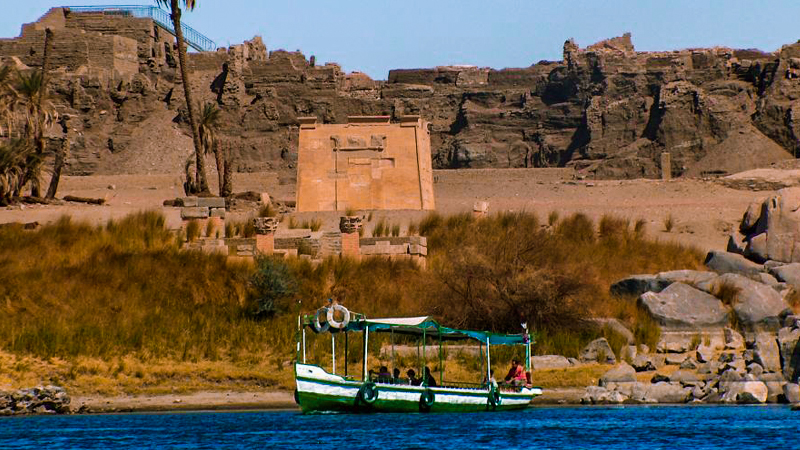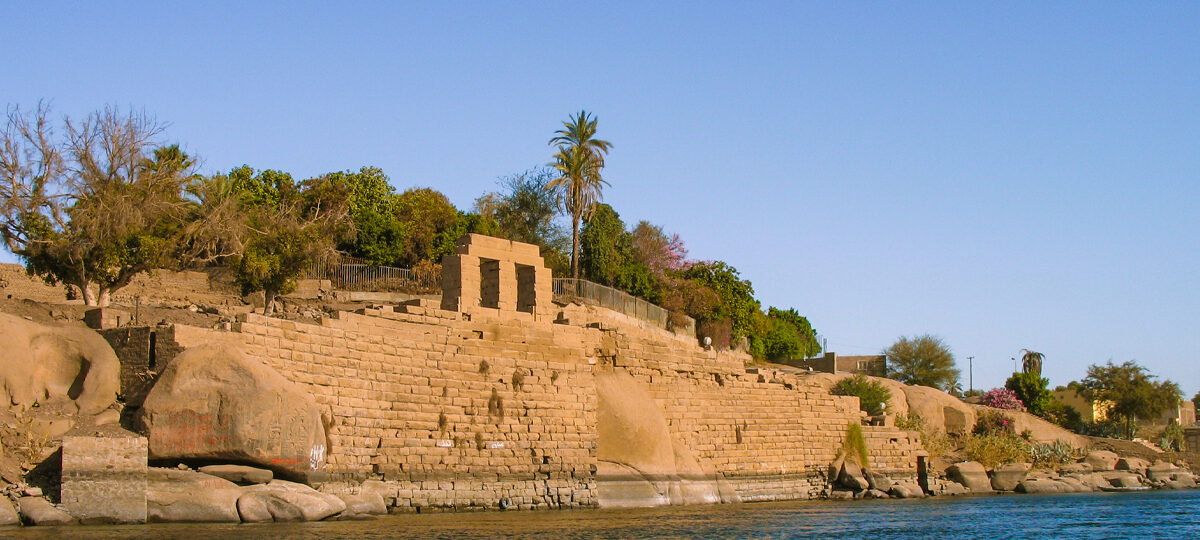Elephantine Island
Several artifacts on Elephantine Island near Aswan show that people have lived there since before the dynastic era. This has been the place to go for as long as people have needed a safe place with limited access. Even the southernmost part of the island was mainly guarded.
Between 525 and 522 B.C., Cambyses II, the ruler of Persia and the son of Cyrus the Great, had all these monuments destroyed. The famous Nilometer measures flood on the Nile River and the Khnum temple that goes with it is still open to the public.
The best way to learn about the ancient Egyptian culture that thrived along the banks of the Nile is to take the Nile Cruises. So Don’t miss booking our Best Nile River Cruises 2025
About Elephantine Island:

Mango and papaya trees grow between the palm trees on the Elephantine island. People live in blue-painted, one- or two-story homes on streets that are so narrow.
Long before 1822, there were temples to Thutmose III and Amenhotep III on the island. Egypt’s governor, Muhammad Ali Pasha, burned them down because he was running for king. The Temple of State, the first temple, was built around 3000 B.C.
Most of the southern part of the island is taken up by the temple’s ruins to Khnum. Stones from the Step Pyramid of the Third Dynasty were used to build these ruins. During the sixth dynasty, the ruler of the area, Hegaib, built a small temple today.
The island’s name might come from how it looks above, like an elephant’s tusk, or from the round rocks that line its shores. Arabs called it “The Island of Flowers,” but the name Elephantine comes from the ancient Egyptian words for “elephant.”
Where is Elephantine Island?

Elephantine Island is on the Nile, near the first waterfall and the city of Aswan. It is the biggest of the islands around it. It was essential during the time of the Pharaohs and even into the late Hellenistic period because that was where the guards of the roads in southern Egypt stayed. As the capital of the nomes in Upper Egypt, Elephantine had to have its trio. In honor of the gods Khnum, State, and Anuket, many temples were built, but now only the ruins remain.
Temple of Khnum

which is also called the “Elephantine Temple.” This is Elephantine, the name of the island, and a big part of the Khnum temple is the Nilometer. The height of Nile River floods can be estimated in part by going to Elephantine, one of the best places to do so.
Eratosthenes, a Greek astronomer, did his measurements there during the time of Ptolemy III Euergetes to figure out how big the Earth was. In later times, worshiping the goddess Isis on the island of Phyle, which the Ptolemies started, gave the Aswan area much more religious importance.
Even though the Elephantine temples in Elephantine Island did well in the first and second centuries AD, Diocletian gave up on the boundary at Aswan in 298 because the Roman Empire was having trouble and the Blemians from the eastern desert were attacking in large numbers. Even though Theodosius did not close the Temple of Philae in 391 CE, each time he tried, Roman and Nubian officials fought with each other.
Check Our Top Nile Cruise Trips:-

